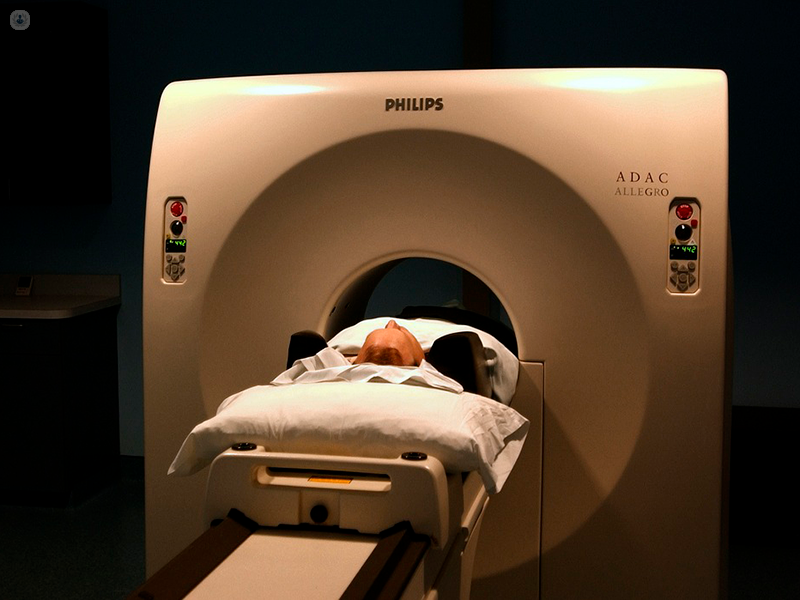PET (positron emission tomography)
What is PET?
Positron emission tomography (PET) is a nuclear medicine diagnostic and research technique that produces images of the organs in your body using small amounts of radioactive material.

Why is PET performed?
A PET scan is useful in the following situations:
- Cancer – a PET scan can detect where cancer has spread in the body, help plan treatment, and assess remission or return of the cancer after treatment
- Cardiology – a PET scan can assess the impact of a heart attack, evaluate blood flow around the body, or plan treatment such as a coronary bypass or angioplasty
- Neurology – a PET scan can detect tumours in the brain or detect abnormal brain patterns in association with epilepsy or Alzheimer’s disease
What happens during a PET scan?
The test involves injecting a small amount of a radioactive material (called a marker) into your blood stream. The marker travels through the blood to the organs and tissues to help the specialist see the areas to be analysed more clearly.
Once the marker is injected, the patient must wait for about an hour and then lie down on a narrow table that is placed inside a tunnel-shaped scanner. The machine detects signals from the marker, which are transformed into three-dimensional images by a computer, and are projected onto a monitor so that the specialist can interpret them. The duration of the scan is between 30 and 45 minutes, depending on the area that is explored.
Preparing for a PET scan
You will not be able to eat for four to six hours before the test, and you should avoid physical exercise the day before. However, you should be able to continue taking your medications. It’s important to let the doctor know of any medication you are taking, including herbal supplements.
Women undergoing a PET scan should inform their doctor if they might be pregnant or are breastfeeding, as the radioactive material has the potential to harm the child.
You’ll be asked to leave any jewellery, piercing, or glasses at home before your exam, and you may be asked to wear a gown during the exam.
What does the exam feel like?
The examination is not painful or uncomfortable, although you’ll need to remain still on the table during the test, to keep the images clear. You might experience a small amount of discomfort from the injection of the marker, but in some clinics it is possible to swallow the marker instead.
Meaning of abnormal PET results
Thanks to this procedure, abnormal results can detect several diseases in their earliest stages, including:
- cancer
- infection
- cardiac, endocrine, or gastrointestinal diseases
- neurological disorders